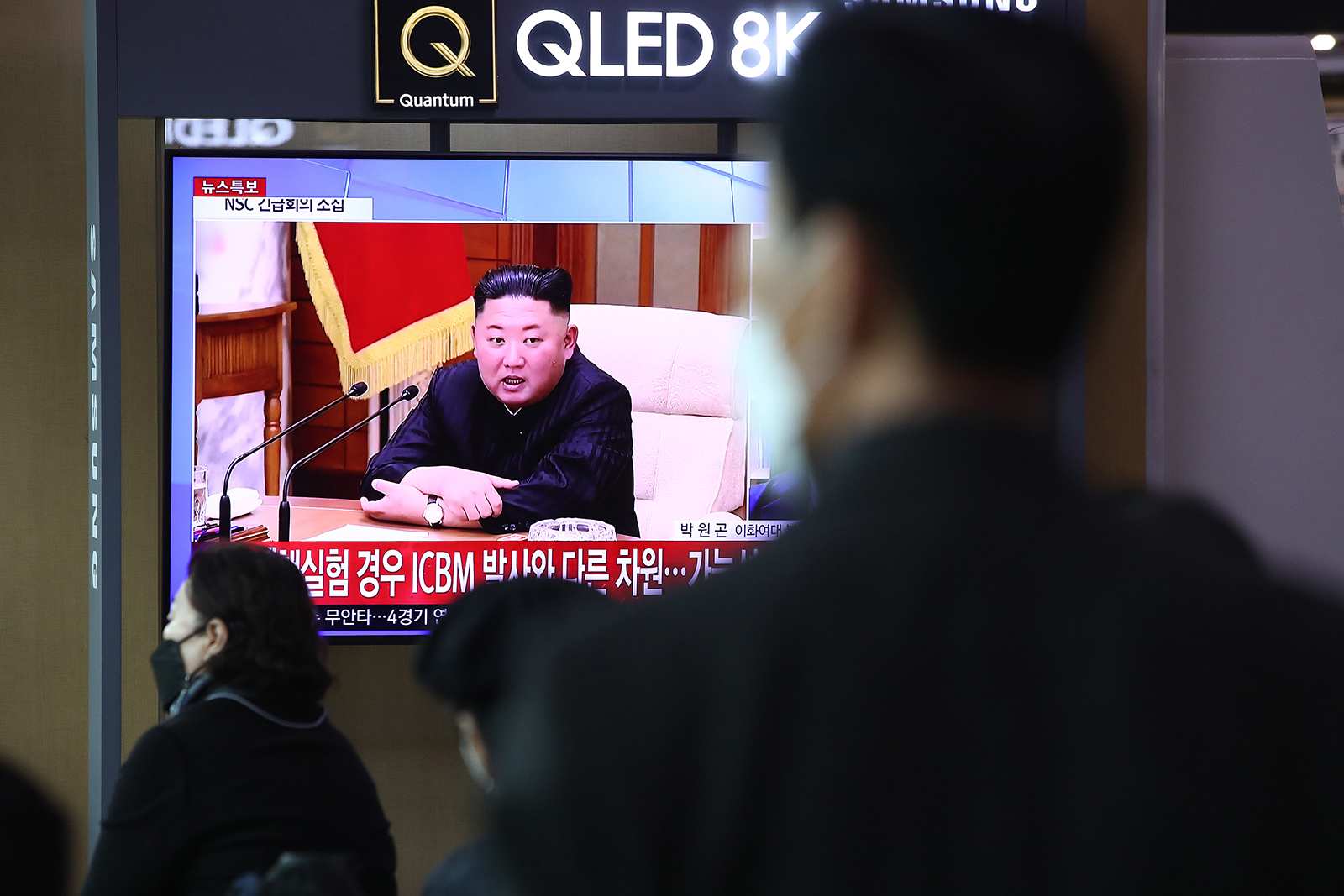North Korea fired an intercontinental ballistic missile toward waters off its east coast in a show of force after the U.S. and South Korea held talks on containing Pyongyang’s atomic ambitions.
The missile splashed down west of Japan’s main northern island of Hokkaido at about 9:37 a.m., the Defense Ministry in Tokyo said. Vice Defense Minister Shingo Miyake told reporters the rocket appeared to be an ICBM.
The missile was launched at 8:42 a.m. from an area near Pyongyang and flew on a lofted trajectory, South Korea’s Joint Chiefs of Staff said.
This would be North Korea’s fifth ICBM test this year. The class of missile is the most powerful in its arsenal and designed to deliver a nuclear warhead to the U.S. mainland. Pyongyang usually releases images of its ICBM launches several hours afterward, giving analysts in the outside world a chance to evaluate the state’s latest missiles.
The launches coincided with talks between the U.S. and South Korea on deepening cooperation in deterring Kim Jong Un from using atomic weapons. The U.S. sent the nuclear-powered USS Missouri attack submarine to the South Korean port of Busan over the weekend, in its latest dispatch of military assets to the region as a part of its deterrence policy.
Before the talks, a top South Korean security official said North Korea may soon test an ICBM, which is designed to deliver a warhead to the U.S. mainland.
On Sunday night, North Korea fired a short-range ballistic missile that flew 355 miles before falling into waters off its east coast, South Korea’s Joint Chiefs of Staff said.
North Korea slammed the meeting of the so-called Nuclear Consultative Group, with a spokesman for the Ministry of National Defense saying the discussion was “an open declaration on nuclear confrontation to make the use of nuclear weapons against the DPRK a fait accompli in case of emergency,” North Korea’s official Korean Central News Agency reported.
Kim is poised to hold a major policy-setting meeting at the end of the year. By testing ballistic missiles, he can show his top cadres and people that the country’s nuclear arsenal is making great strides in being able to attack the U.S., reinforcing the propaganda message that its expansion is essential to prevent a U.S. invasion.
The latest launches come after North Korea placed a satellite into orbit in late November, moving Kim closer to his key policy goal of deploying an array of reconnaissance probes to keep an eye on U.S. forces in the region.
Pyongyang has now fired 30 ballistic missiles and three space rockets so far this year. Last year, Kim’s regime launched more than 70 ballistic missiles, a record for the state.
The last time North Korea tested an ICBM was in July when it fired off its new solid-fuel Hwasong-18, which had the longest flight time for any of the state’s ballistic missiles. The missile appeared designed to carry a multiple nuclear weapons payload, which increases the chances at least one bomb could slip past interceptors and make its way to a target.
Solid-fuel missiles have the propellants baked into rockets, allowing them to be rolled out and fired in minutes, giving the US less time to prepare for interception. The challenge becomes even greater if the missile carries several warheads rather than one.
Still, it’s unclear whether the warheads aboard North Korea’s ICBMs could evade interception and survive reentry into the atmosphere to reach their targets.
Kim has ignored U.S. calls to return to long-stalled nuclear disarmament talks through which Pyongyang could secure economic aid in exchange for disarmament. He has stayed busy modernizing his arsenal of missiles and conducting tests of systems to attack South Korea and Japan, which host the bulk of U.S. military personnel in the region.

